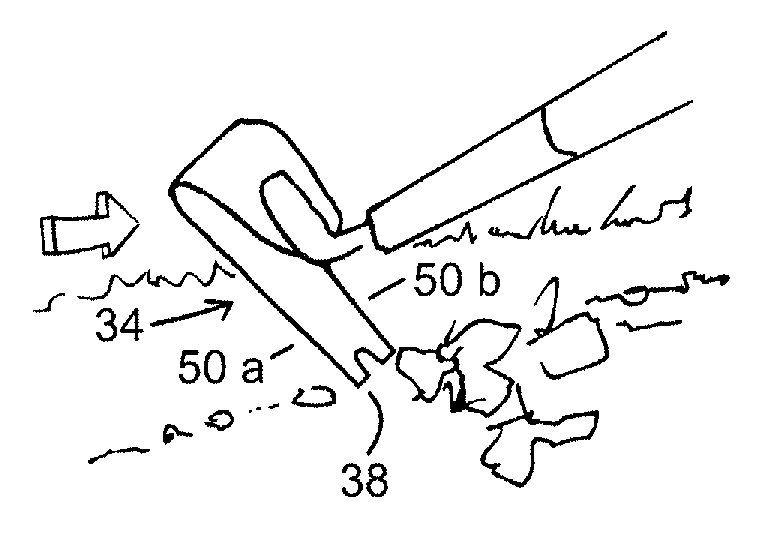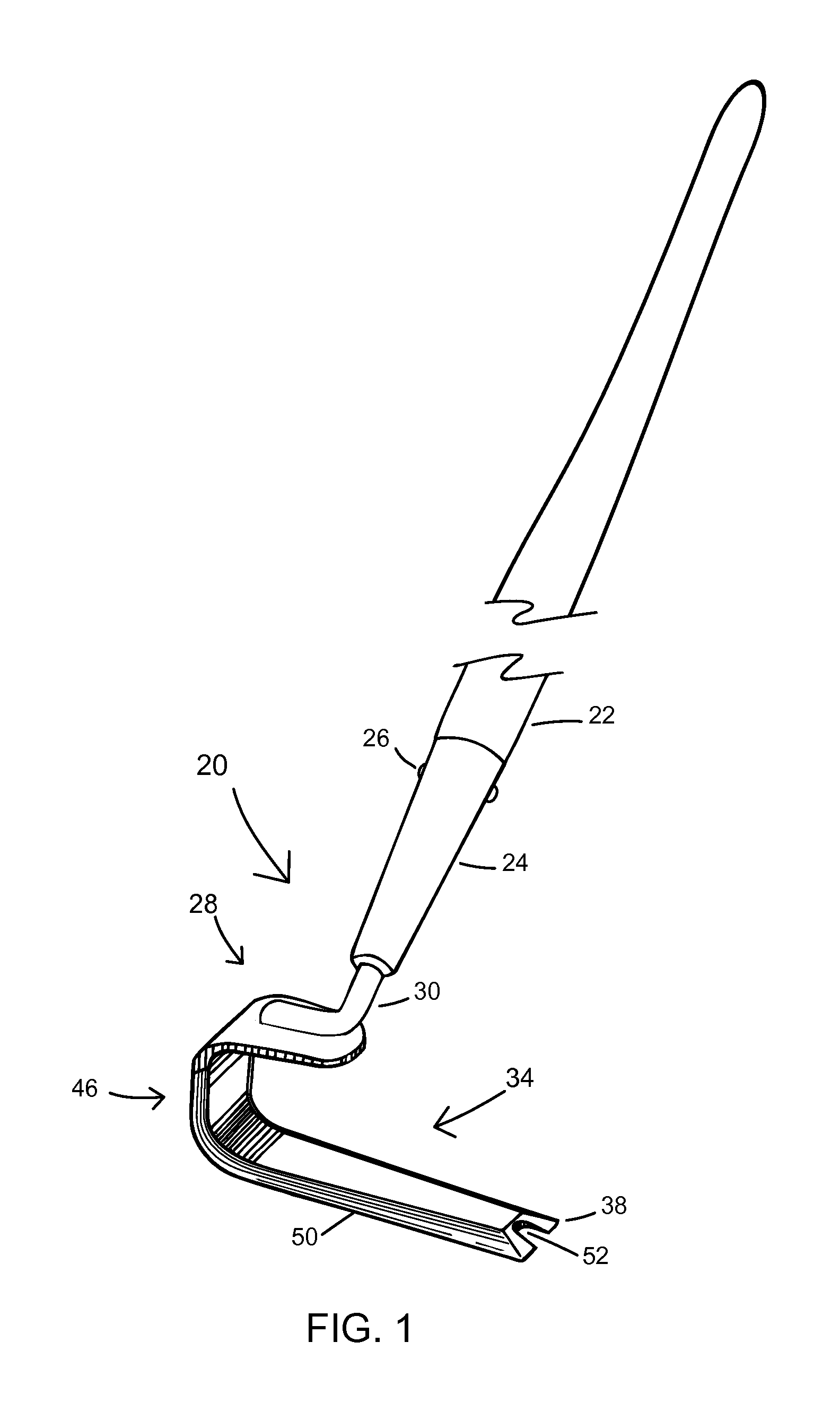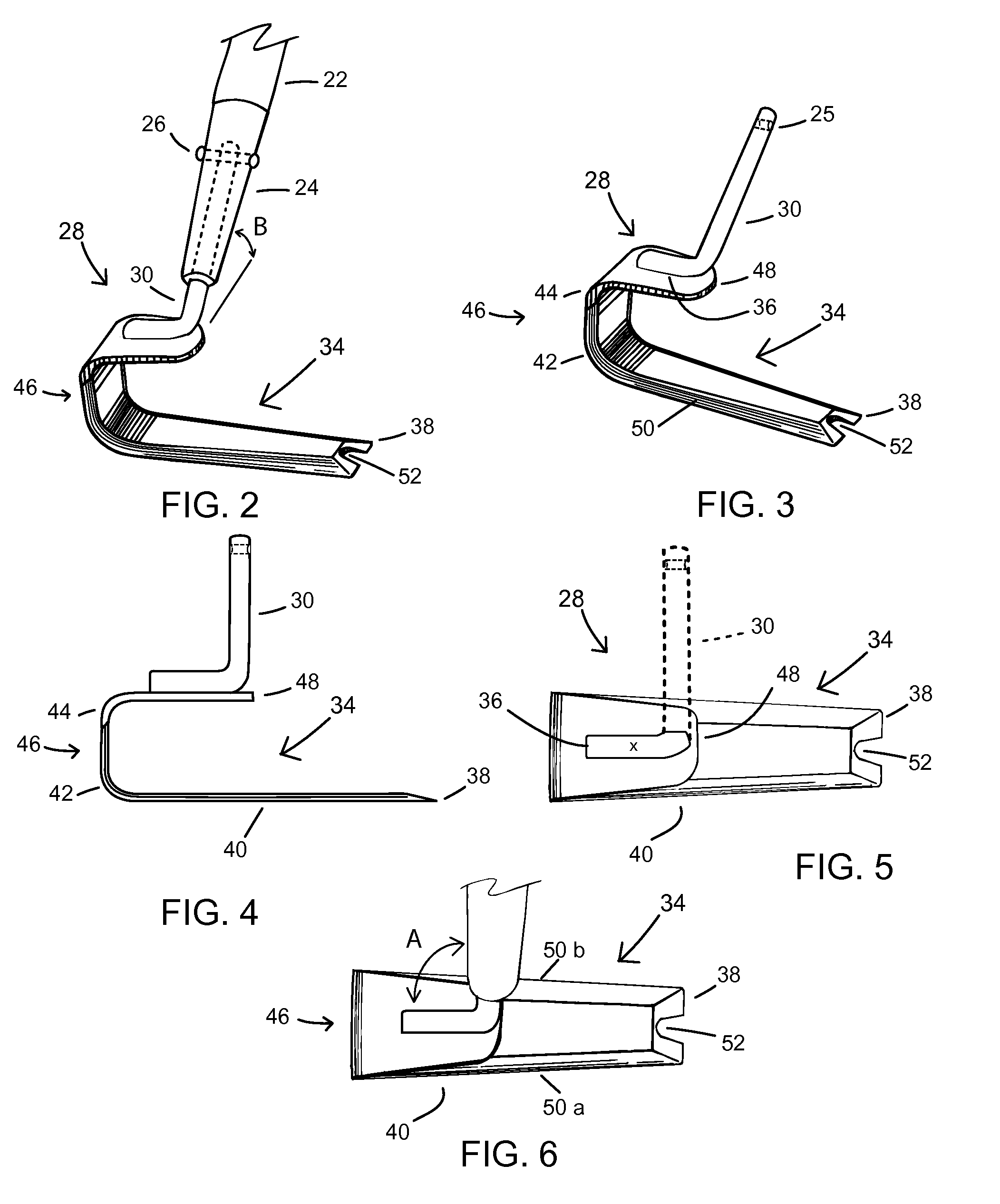Garden tool
- Summary
- Abstract
- Description
- Claims
- Application Information
AI Technical Summary
Benefits of technology
Problems solved by technology
Method used
Image
Examples
Embodiment Construction
[0030]Throughout the drawings, like reference numerals refer to like elements. The reference numerals are as follows: Garden Tool 20, Handle 22, Ferrule 24, Hole 25, Rivet 26, Tool Head 28, Tang 30, Blade 34, Cutout 36, Tip 38, Horizontal Base 40, Bottom Curvature 42, Top Curvature 44, Heel 46, Flange 48, Beveled Edges 50, and “U” Notch 52.
[0031]The present embodiment may be used for weeding, edging, cultivating, making and covering furrows, tamping, hoeing, hilling, chopping, contouring, and slicing. The following is a description of certain embodiments of the invention. Other embodiments may be made without departing from the spirit or scope of the invention. For clarity, these various embodiments are discussed in a separate section that follows this description of the drawings.
[0032]Referring to FIG. 1 of the drawings, there is shown the present embodiment of a garden tool, indicated generally by the reference numeral 20. Garden tool 20 is composed of an elongated cylindrical, wo...
PUM
| Property | Measurement | Unit |
|---|---|---|
| Fraction | aaaaa | aaaaa |
| Thickness | aaaaa | aaaaa |
| Angle | aaaaa | aaaaa |
Abstract
Description
Claims
Application Information
 Login to View More
Login to View More - R&D
- Intellectual Property
- Life Sciences
- Materials
- Tech Scout
- Unparalleled Data Quality
- Higher Quality Content
- 60% Fewer Hallucinations
Browse by: Latest US Patents, China's latest patents, Technical Efficacy Thesaurus, Application Domain, Technology Topic, Popular Technical Reports.
© 2025 PatSnap. All rights reserved.Legal|Privacy policy|Modern Slavery Act Transparency Statement|Sitemap|About US| Contact US: help@patsnap.com



